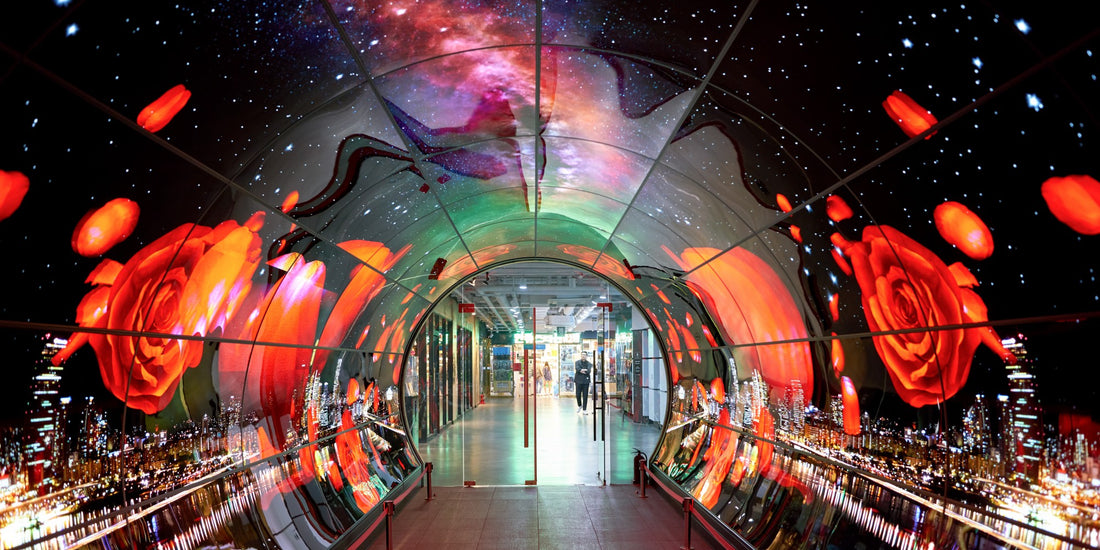What is OLED, and How Is It Different From LED
An organic light-emitting diode (OLED) is a kind of light-emitting diode (LED) with its light-emitting source and does not need an external light source to display the screen. They are more efficient and respond faster than LEDs or LCDs. The flexibility and durability of these OLED panels open up new possibilities for different designs and displays.
The technology of OLED is already very mature now and there are many OLED panels with very excellent performance on the market, such as the curved OLED screen, transparent OLED display and so on.
An OLED copies the same principle as an LED but works in a slightly different way because an LED panel needs a backlighting setup, but an OLED panel creates its own light and doesn't need any external source, and that's why it is more expensive than an LED.
Keep reading to learn more about OLED and LED.
Evolution of OLED: From Concept to Reality
OLED has gone from being an idea to being a reality. Developed at the end of the 1980s, OLED has revolutionized the display industry. Unlike LCD or LED displays, OLED displays have the ability to be flexible and come in a variety of shapes and sizes. OLED is made of an organic material that emits light when it comes into contact with an electrical current.
In recent years, substantial advancements have been made in this technology, and a critical advancement was the OLED (AMOLED) display, which enhanced the lifespan of OLED screens. The evolution of this technology has brought many improvements and advancements in color accuracy, ratio, and angles.
Furthermore, OLED technology has expanded; now, we can see flat, flexible panels, curved screens, and even rollable displays. Overall, the journey of OLED technology from concept to reality has been remarkable.
Understanding the Basic Differences: OLED vs LED
➔ Picture Quality
When it comes to picture quality, OLED and LED have significant differences. OLED displays emit their own light and offer higher contrast ratios, deeper blacks, and wider angles. On the other hand, LED displays use a backlighting system, so they offer less accurate blacks and lower contrast ratios.
➔ Lifespan
This is a significant factor when choosing between OLED and LED displays. LED displays have a longer life than OLED displays. LED can last tens of thousands of hours, while OLED typically has a shorter life of 20,000 to 40,000 hours only.
➔ Cost Comparison
OLED displays are generally more costly than LED because they are more advanced and have a different manufacturing process because they use new technology, so LED displays are more budget-friendly than OLED.
➔ Energy efficiency
OLED displays require more power to produce vivid colors and a high contrast display ratio. On the other hand, LED displays use less energy than OLED displays because LED displays convert electricity into light, resulting in low power consumption.
➔ Durability
Led displays are durable and are known for obstruction to damage. They can withstand temperature variations, harsh weather conditions, and any pressures. However, OLED displays are more touchy and liable to damage from any vibrations or pressure.
Illuminating the Advantages: OLED vs LED
- OLED technology offers a vibrant display quality, while LED displays offer an average picture quality.
- OLED panels are thinner than LED panels.
- LED displays are more pocket-friendly than OLED displays.
- OLED displays have faster response times than LED displays.
- LED displays are more durable than OLED displays, which are more touchy.
- OLED technology is more power efficient than LED displays.
- OLED technology has wider angles and consistent image quality than LED or LCD.
Choosing the Right Display: OLED or LED?
When it comes to finding the correct display, it depends pn your preferences and needs. The OLED display is convenient in terms of picture quality, flexibility, and wider viewing angles—this technology is excellent for those who love deep blacks, vibrant colors, and engaging visuals.
On the other hand, LED displays also have benefits, such as being cost-effective and having high brightness levels. So this technology is an excellent choice for those who prefer eco-friendly and high brightness. So it is all about your choice or preference.
Conclusion
OLED is a fresh technology, and its display truly shines in picture quality, colors, and dynamic visuals, providing an immersive viewing experience. When considering LED versus OLED display, it isessentialt to compare the benefits of each technology according to your needs and preferences.
In contrast, LEDs have their own merits. They are affordable and have high brightness, making them suitable for environments where brightness is a priority. OLED and LED have significantly advanced in recent years, so both have merits. It all depends upon your choice, needs, or desires regarding which type of technology you want to purchase and whether it meets your taste or not.
Ultimately, you have to consider factors such as budget or pricing, condition, brightness level, desired picture quality, design or shape you want, and the specific device you are considering. Then, you should make a decision regarding buying or using any display technology.

